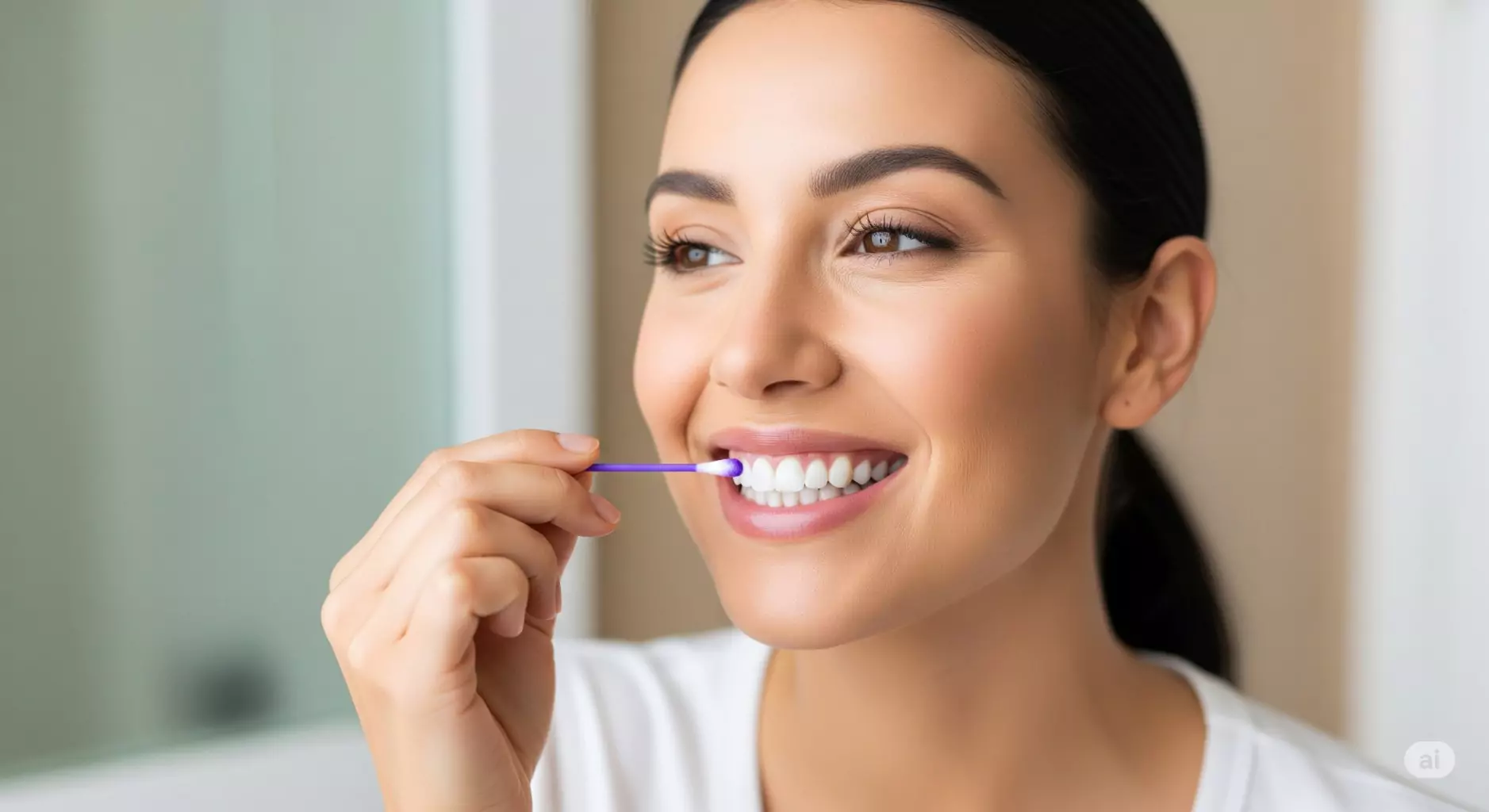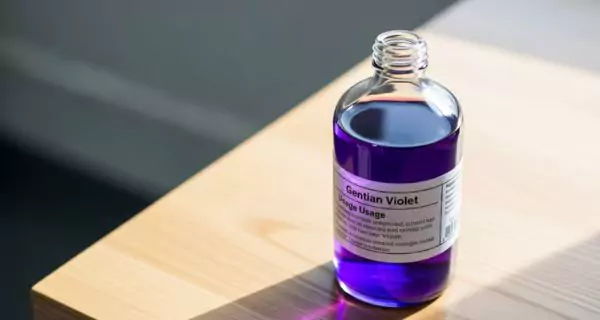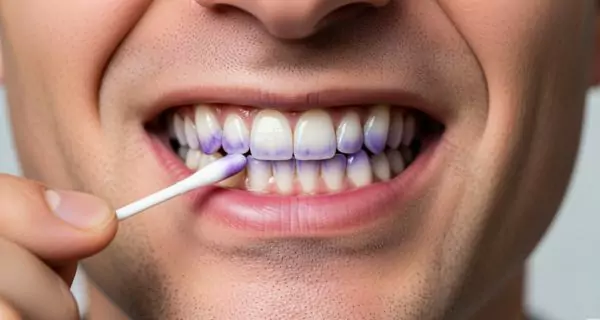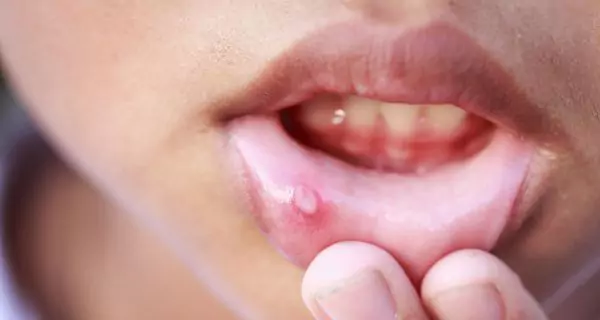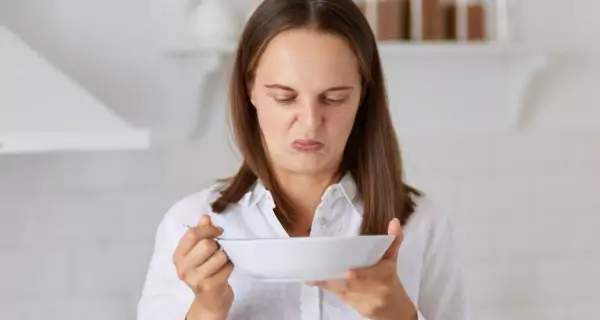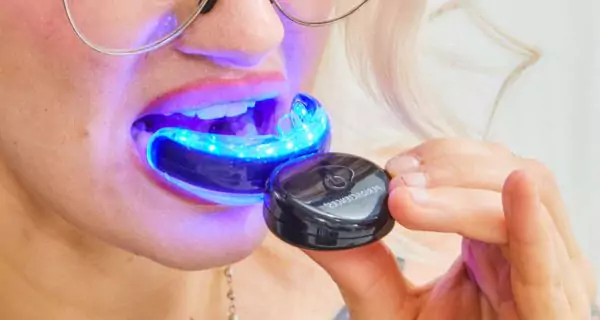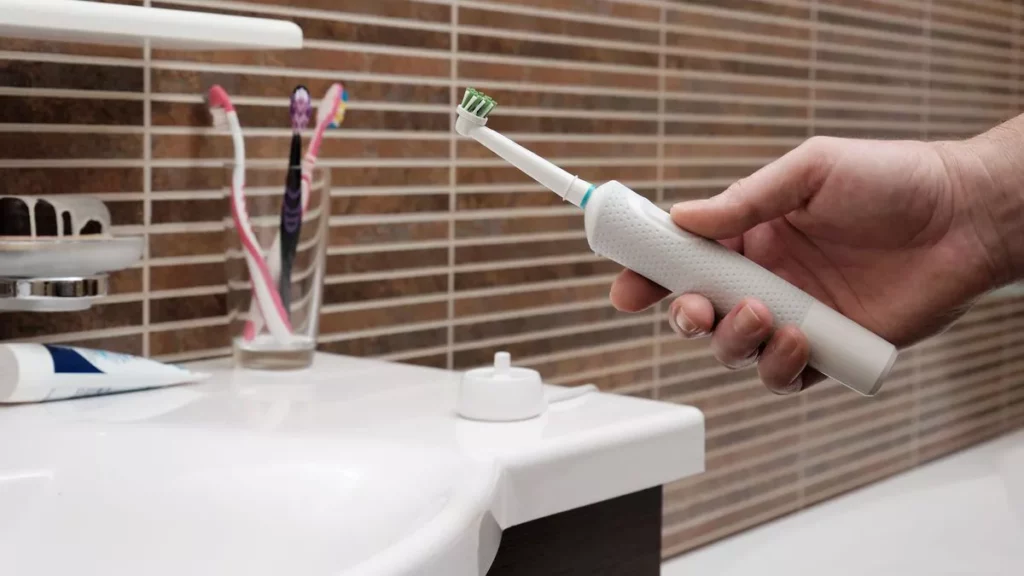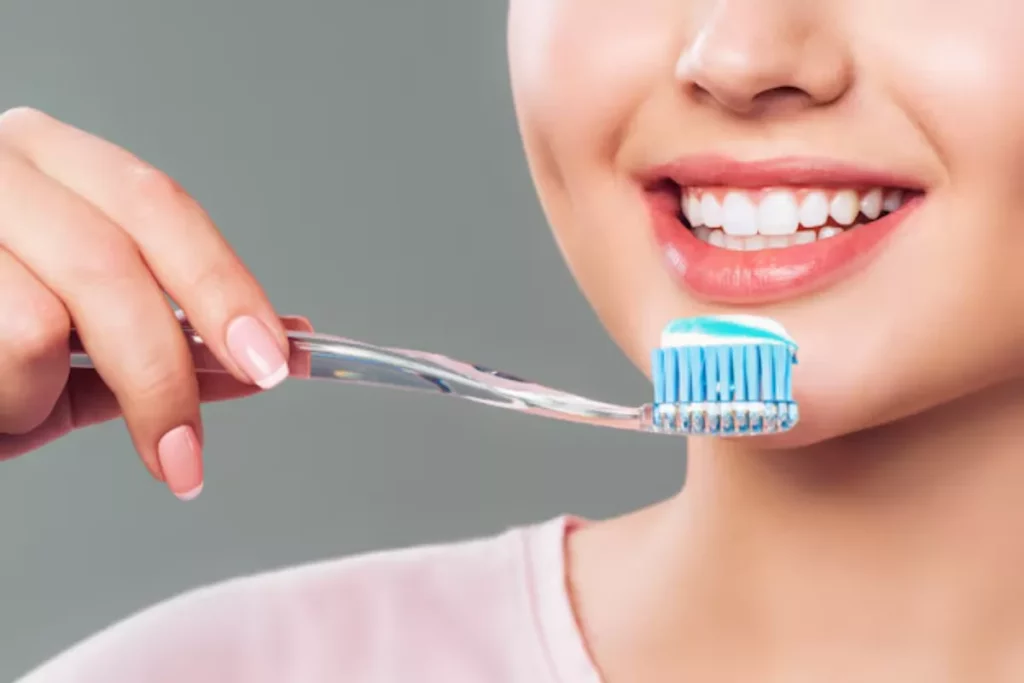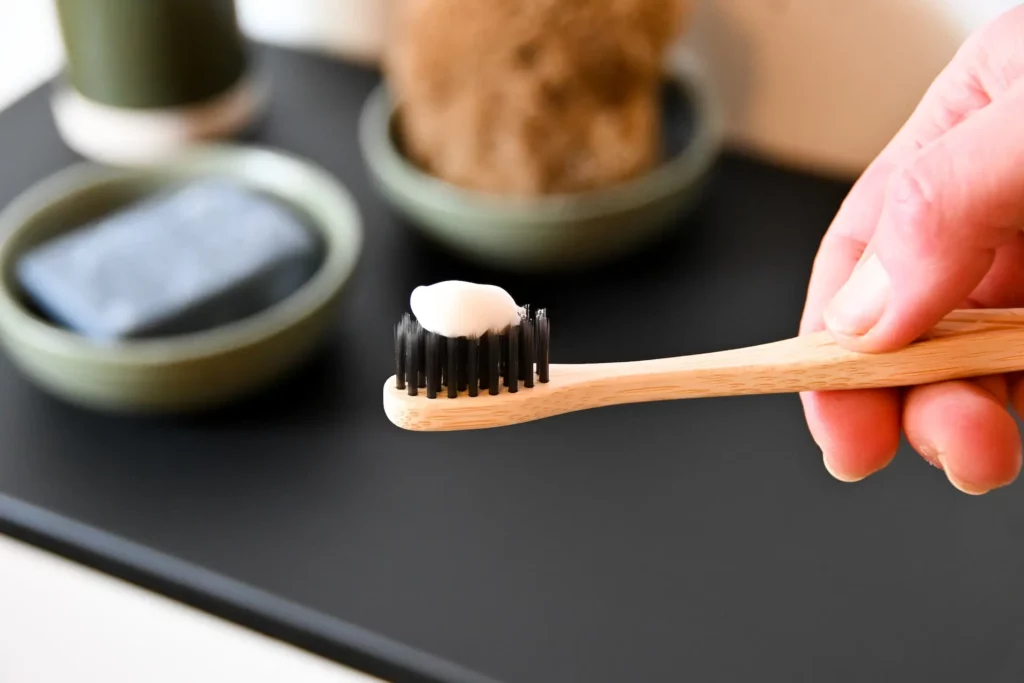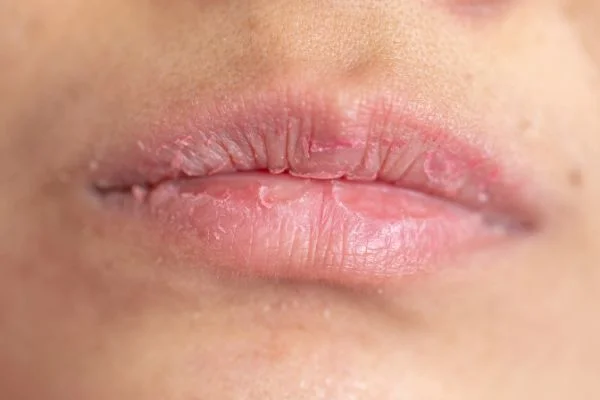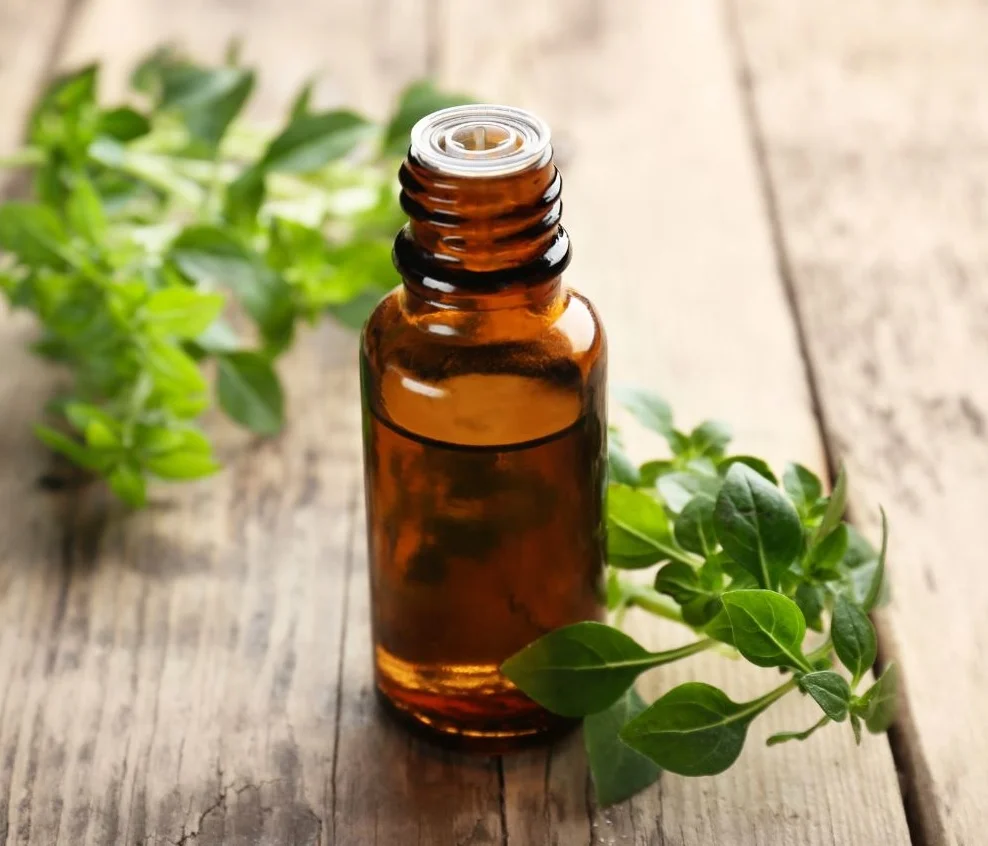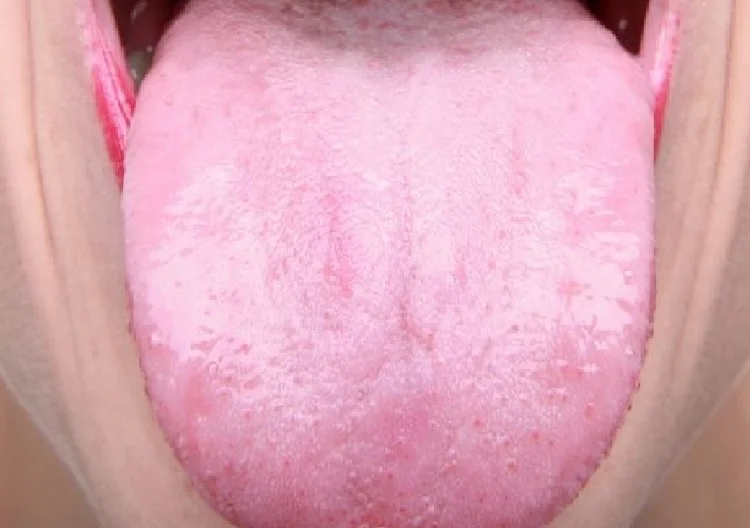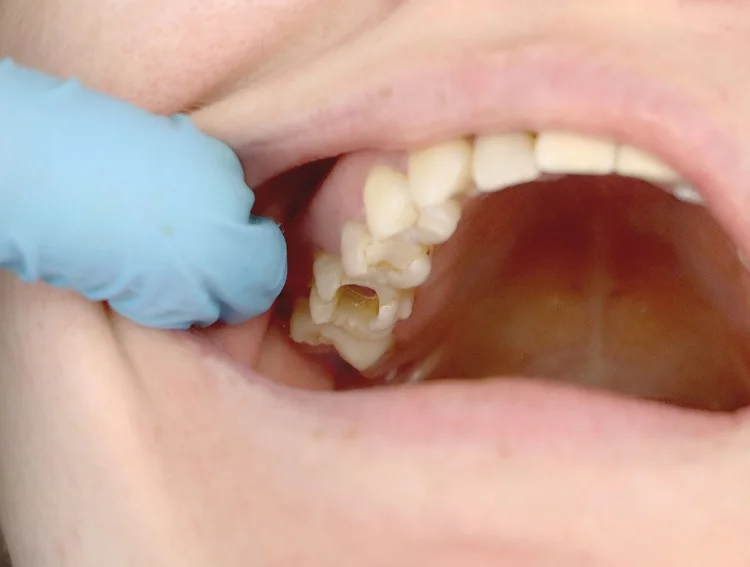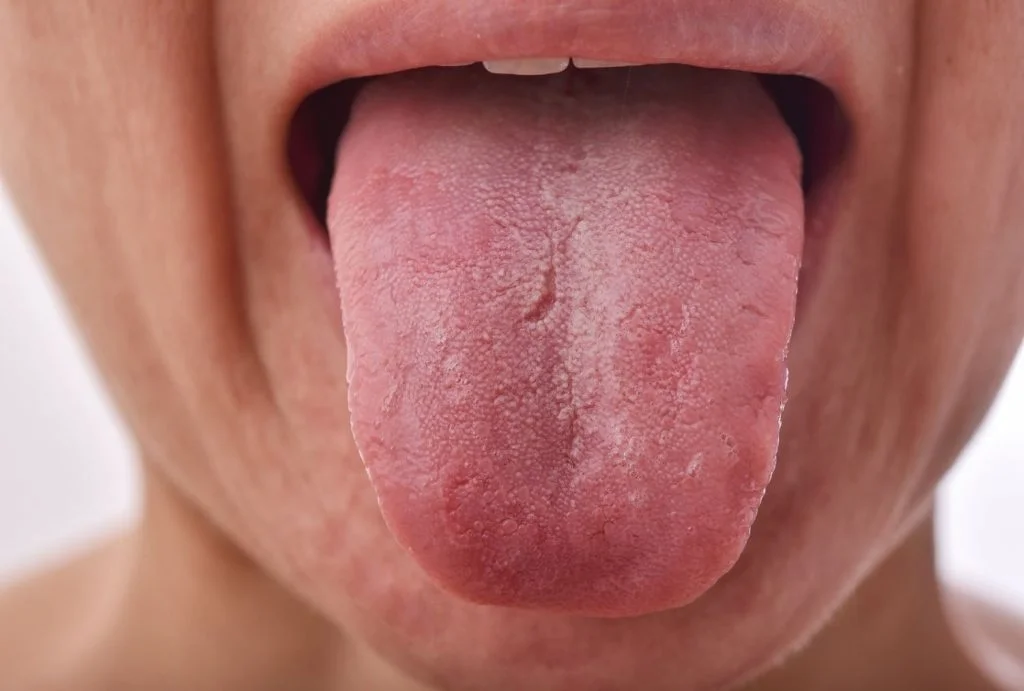Last Updated on: 19th September 2025, 12:29 pm
Gentian violet is trending online as a DIY teeth whitener because of its purple color. However, it's a medical antiseptic—not a cosmetic—and can cause gum burns, enamel stains, and irritation. Let’s be clear: it doesn’t whiten teeth and is not safe for oral use.
We live in the age of viral beauty hacks. With the internet more accessible than ever, it’s easy to find advice on just about anything, including ways to whiten your teeth at home. But not everything presented online is true. Many viral trends are based on misinformation or made simply to attract views.
One of those trends is the use of gentian violet as a supposed teeth-whitening solution. Social media users are promoting it as a way to “color correct” yellow teeth.
Before you try it, it’s important to understand the facts. In this article, we’ll explain what gentian violet really is, why it’s gone viral, the risks it poses to oral health, and safer, dentist-approved alternatives for achieving a whiter smile.
What is gentian violet and what is it used for?
Gentian violet, also known as crystal violet, is a synthetic dye with antibacterial and antifungal properties. For decades, it was used in medical and laboratory settings, including:
- treating thrush (candidiasis), especially in infants
- applying on minor wounds, skin infections, and nipple thrush in breastfeeding mothers
- serving as a laboratory stain for Gram staining in microbiology
However, concerns about its toxicity and potential carcinogenicity have led to its decline in medical use, being replaced by safer, modern treatments.
Nonetheless, despite these warnings, gentian violet is gaining attention again, not for medical use, but as a supposed teeth-whitening solution. So, what’s behind this trend? Let’s take a look.
Why is gentian violet being used for teeth whitening?
This trend started with a simple color theory idea. According to the color wheel, purple is the opposite of yellow, which means purple can cancel out yellow.
This theory functions in hair care products: for example, someone who applies a blond color should use a purple shampoo to reduce yellow tones and maintain a light color of hair.
Based on this, some people assume this would also work on teeth. So they:
- apply gentian violet directly to their teeth
- or mix it with toothpaste
- brush or rinse for a few seconds
- then post “before and after” videos online
Does gentian violet actually whiten teeth?
No, gentian violet doesn’t truly whiten teeth. But, if it doesn’t work, why do people see their teeth becoming more white? It has an explanation.
What gentian violet does is create a temporary optical illusion. Its dark purple color masks yellow tones, making teeth look whiter for a short time.
But the truth is:
- there’s no real bleaching
- it doesn’t remove stains
- it doesn’t clean the enamel
- the effect fades quickly once the dye wears off
Worse yet, it can leave new purple stains on your enamel or gums. Many videos you see online use filters or lighting tricks to exaggerate the results.
It may seem impressive in videos, but the results are superficial, and the risks to your oral health are much more serious than any short-lived change in appearance.
Is gentian violet safe for teeth?
Not really. This product was never designed for dental use and has no approval from any dental or health authority for cosmetic oral applications.
Gentian violet is a strong chemical with intense pigmentation that can:
- permanently stain tooth enamel and soft tissues (like gums and cheeks)
- cause gum burns, mouth ulcers, and mucosal discoloration
- trigger allergic reactions in some individuals
What do the studies say?
Studies on animals have linked oral exposure to gentian violet with cancer risk, including liver, thyroid, and other types of tumors. As a result, several countries like Canada, Singapore, Australia, and others have issued official warnings or limited their use.
In the U.S., gentian violet is listed under California’s Proposition 65 list as a potential carcinogen and mutagen.
What are the reported side effects of oral use?
Using gentian violet in your mouth can lead to serious side effects. Documented reactions include:
- burning or stinging sensation on the gums or inside the cheeks
- inflamed or peeling tissue, and in some cases, painful ulcers
- purple stains that are very difficult to remove from enamel or mucosa
- changes in taste, including a lingering metallic sensation
- nausea, especially if any of the dye is swallowed
- enamel erosion or damage with repeated use
- in rare cases, tissue necrosis or even partial airway blockage due to swelling or irritation
These effects can occur even after a single use, especially if the dye is applied directly, used undiluted, or not rinsed off properly.
As you have seen, gentian violet may look like a quick fix on social media, but in reality, it can cause real and lasting harm.
Can gentian violet be dangerous for children?
Yes, gentian violet can be especially dangerous for children. Here’s why:
- Children have very sensitive oral tissues, which makes them more likely to suffer burns or irritation.
- Accidental swallowing of the dye can be toxic and has led to medical emergencies in infants.
- Because of these risks, it’s not approved for use in children under 12 years of age.
Many teens are trying this trend after seeing it on TikTok or YouTube, often without telling their parents or understanding the danger.
If you’re a parent, it’s important to know that what seems like a harmless beauty trick online can actually harm your child’s mouth or even their health.
What to do if you’ve already used gentian violet
If you’ve experimented with gentian violet:
- Stop immediately.
- Rinse thoroughly with water or saline.
- Avoid hard brushing to prevent further irritation.
- Watch for symptoms: burns, swelling, purple stains.
- See your dentist if discomfort or staining persists.
Remember that using gentian violet is far more harmful than any cosmetic benefit it might offer.
What whitening alternatives are safer and effective?
If you want a whiter smile, it’s important to avoid risky trends and choose methods that are safe, approved, and recommended by dental professionals.
Here are the best options:
Whitening toothpastes
These products contain gentle abrasives or low-dose peroxides that help remove surface stains without damaging enamel. Recommended brands include:
Over-the-counter whitening kits
These kits are widely available and easy to use at home.
- LED Whitening Kits (like MySmile or AuraGlow): use LED light and peroxide-based gel to brighten teeth gradually.
- Whitening Strips (like Crest Whitestrips): clinically tested and safe when used as directed.
Professional treatments
- Custom at-home trays: Your dentist creates custom-fit trays based on a mold of your teeth and provides a whitening gel with a safe concentration of carbamide or hydrogen peroxide.
- In-office bleaching: This method offers the fastest and most noticeable results. Performed under supervision, dentists use 10–35% hydrogen or carbamide peroxide in a controlled environment.
Professional treatments are safer and reduce gum irritation and sensitivity, with better and sometimes faster results.
Natural options
Some people try baking soda, activated charcoal, or even turmeric to whiten teeth naturally. However, these should only be used under dental supervision, as they can be abrasive and damage enamel if misused.
Before starting any whitening treatment, always consult your dentist. They can evaluate the condition of your enamel and recommend the best method for your smile and safety.
Conclusion
Following viral trends without expert advice can be risky, especially when they involve both your oral and general health.
Gentian violet is not a whitening product; it’s a medical antiseptic. Using it on your teeth can be harmful and cause burns, stains, and serious damage to enamel and gums.
Before trying any whitening method at home, make sure it’s made for oral use and talk to your dentist. Choosing safe, dentist-approved products is the best way to care for your smile and your health, not just your social media image.
Frequently Asked Questions
Is gentian violet safe to use in your mouth?
Can gentian violet stain my teeth permanently?
Is gentian violet approved for teeth whitening?
Why does gentian violet make teeth look whiter?
What is the safest and most effective way to whiten teeth?
Voice and Search (Q&A)
What should I do if I have used gentian violet on my teeth?
Stop using it right away, rinse your mouth with water or saline, and avoid brushing hard. If you feel any pain, swelling, or staining, see your dentist immediately.
Why is gentian violet trending for teeth whitening?
It is due to viral videos on social media. Some people think the purple dye cancels yellow tones, like purple shampoo for hair, but it doesn’t work the way on teeth.
Can gentian violet whiten your teeth?
No, gentian violet does not actually whiten teeth. It only covers yellow tones for a short time and can stain enamel or cause irritation.
Share
References
1. Bottaro, A. (2024, January 30). Can you use Gentian Violet for thrush? Verywell Health. https://www.verywellhealth.com/gentian-violet-for-thrush-5182450
2. Boras, V. V., Brailo, V., Rogulj, A. A., Juras, D. V., Gabric, D., & Vrdoljak, D. V. (2019). Corrigendum to “Oral Adverse Reactions Caused by Over-the-Counter Oral Agents.” Case Reports in Dentistry, 2019, 1. https://onlinelibrary.wiley.com/doi/10.1155/2019/2816785
3. Maley, A. M., & Arbiser, J. L. (2013). Gentian Violet: a 19th century drug re‐emerges in the 21st century. Experimental Dermatology, 22(12), 775–780. https://onlinelibrary.wiley.com/doi/10.1111/exd.12257
4. McIntyre, C. (2025, June 13). Gentian Violet – Uses, Side Effects, and More. WebMD. https://www.webmd.com/drugs/2/drug-4397/gentian-violet-topical/details
5. Slotkowski, E. L. (1966). Mucosal irritation following use of gentian violet. Archives of Pediatrics and Adolescent Medicine, 112(1), 40. https://jamanetwork.com/journals/jamapediatrics/article-abstract/501854
-
Dr. Yeidy Carolina Mesa [Author]
DDS Yeidy Carolina Mesa Passionate Dentist | Advocate for Accessible Oral Health Education Graduating from Universidad CES in 2022, I am a dedicated general dentist with a lifelong passion for helping others and making a meaningful impact in the world. My journey into dentistry began at the age of 7, inspired by my own experience with braces and overcoming a fear of the dentist. This personal journey shaped my mission to help patients conquer their own dental anxieties and embrace a healthier,...
View all postsRecent Posts
-
Nayibe Cubillos M. [Medical Reviewer]
Pharmaceutical Chemestry |Pharmaceutical Process Management | Pharmaceutical Care | Pharmaceutical Services Audit | Pharmaceutical Services Process Consulting | Content Project Manager | SEO Knowledge | Content Writer | Leadership | Scrum Master
View all posts
A healthcare writer with a solid background in pharmaceutical chemistry and a thorough understanding of Colombian regulatory processes and comprehensive sector management, she has significant experience coordinating and leading multidisciplina...


